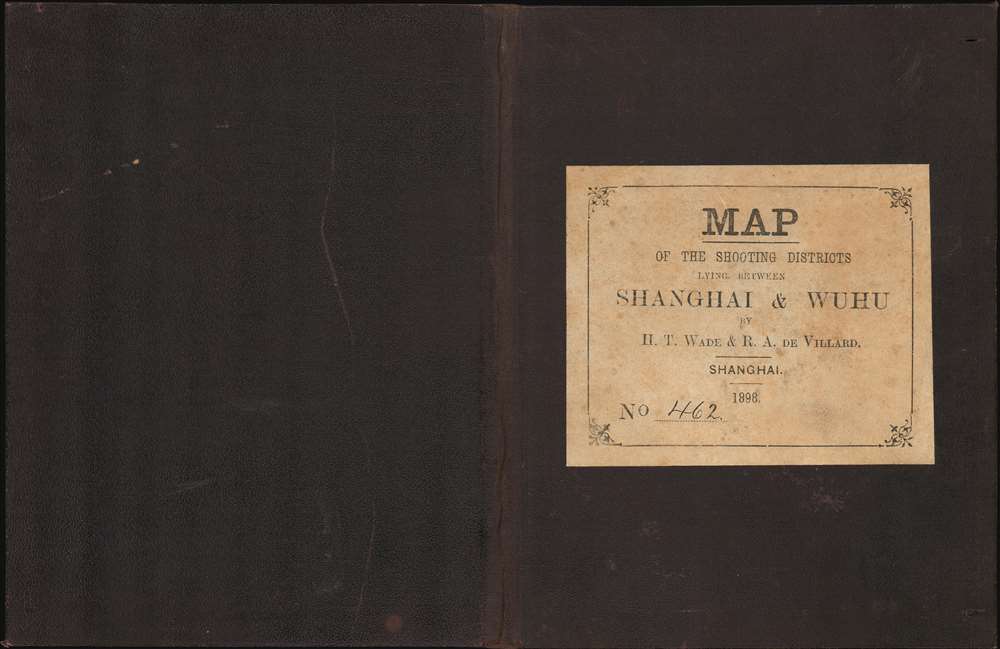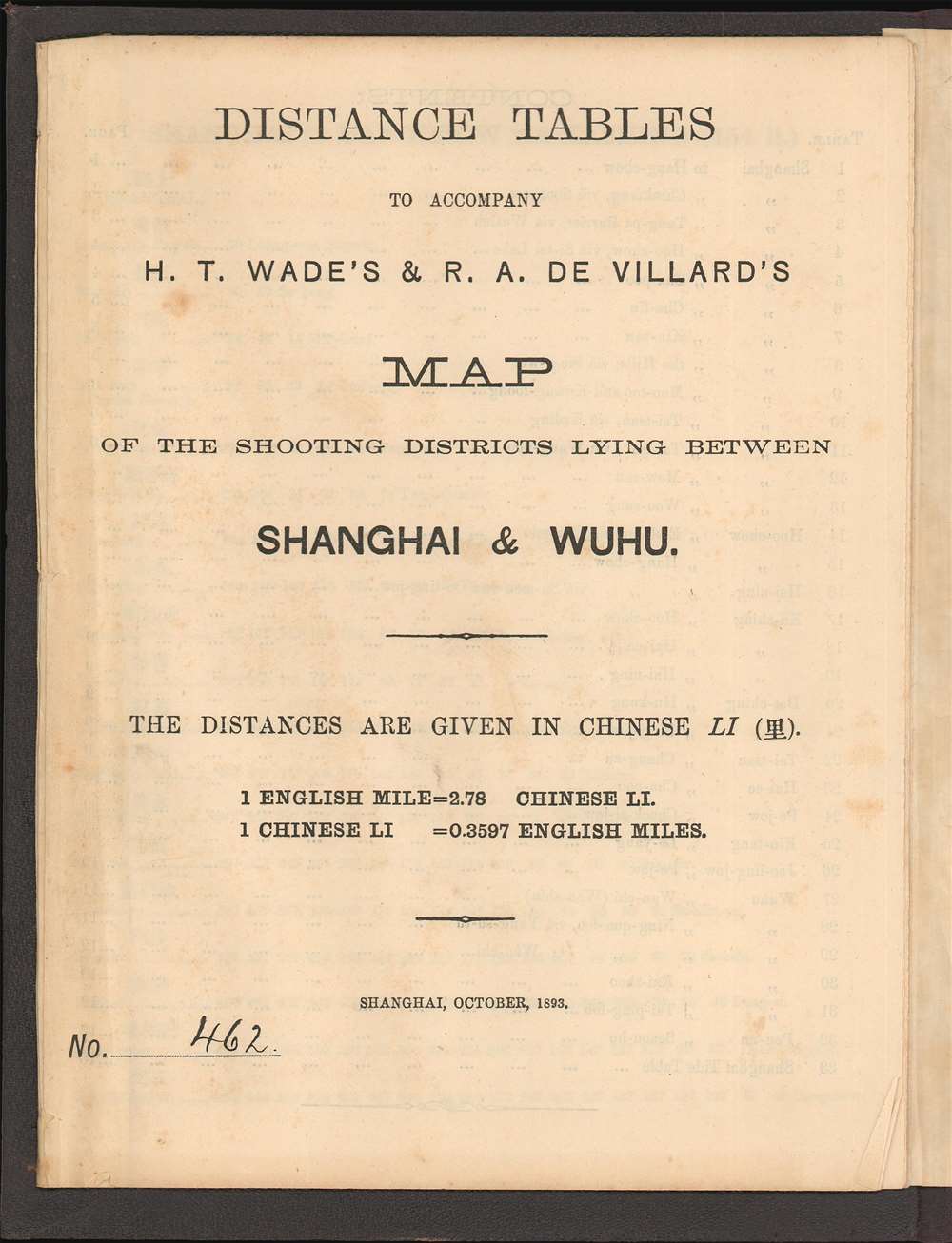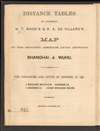Digital Image: 1893 Wade and Villard Hunting Map of Shanghai and its Environs
ShanghaiWuhu-villardwade-1893-2_d
Title
1893 (dated) 26 x 38.5 in (66.04 x 97.79 cm) 1 : 443520
Description
FOR THE ORIGINAL ANTIQUE MAP, WITH HISTORICAL ANALYSIS, CLICK HERE.
Digital Map Information
Geographicus maintains an archive of high-resolution rare map scans. We scan our maps at 300 DPI or higher, with newer images being 600 DPI, (either TIFF or JPEG, depending on when the scan was done) which is most cases in suitable for enlargement and printing.
Delivery
Once you purchase our digital scan service, you will receive a download link via email - usually within seconds. Digital orders are delivered as ZIP files, an industry standard file compression protocol that any computer should be able to unpack. Some of our files are very large, and can take some time to download. Most files are saved into your computer's 'Downloads' folder. All delivery is electronic. No physical product is shipped.
Credit and Scope of Use
You can use your digial image any way you want! Our digital images are unrestricted by copyright and can be used, modified, and published freely. The textual description that accompanies the original antique map is not included in the sale of digital images and remains protected by copyright. That said, we put significant care and effort into scanning and editing these maps, and we’d appreciate a credit when possible. Should you wish to credit us, please use the following credit line:
Courtesy of Geographicus Rare Antique Maps (https://www.geographicus.com).
How Large Can I Print?
In general, at 300 DPI, you should at least be able to double the size of the actual image, more so with our 600 DPI images. So, if the original was 10 x 12 inches, you can print at 20 x 24 inches, without quality loss. If your display requirements can accommodate some loss in image quality, you can make it even larger. That being said, no quality of scan will allow you to blow up at 10 x 12 inch map to wall size without significant quality loss. For more information, it is best consult a printer or reprographics specialist.
Refunds
If the high resolution image you ordered is unavailable, we will fully refund your purchase. Otherwise, digital images scans are a service, not a tangible product, and cannot be returned or refunded once the download link is used.
Cartographer S
Robert Alexis de Villard (費拉爾; 1860 - c. 1920), commonly R. A., was a painter, artist, and customs official who spent most of his life in the foreign concessions of Shanghai. All evidence suggest that Villard was born in Strasbourg, Alsace-Lorraine. He is noted in customs documents as a 'German' but seems to identify as 'French' - understandable given that this was formerly French territory. Villard spent his formative years in Paris, where he studied painting. He was later closely aligned to British interests and may have served as a foreign national in the British extraterritorial government. Customs records can definitively place Villard in Shanghai as early as 1885, where it took the Chinese name 'Fei Laer' (費拉爾). He likely followed family members to Shanghai, as there is some evidence that a relative owned a grocery in the French Concession. By 1888 Villard was married, as his wife, one 'Madame R. A. de Villard', is noted as residing at 13 Xihuade Road (Changzhi Road). In 1889, he was associated with the 'Crown Advocate Office' and later independently with the firm of 'Villard et Girault'. He entered the Shanghai Customs Register Office in September of 1892. It was during his tenure at this office, the high-point of his career in Shanghai, that Villard created his only map, the unique Shooting Districts Lying Between Shanghai and Wuhu. Around this time, he was fatefully commissioned to design multiple customs and postal stamps - a misbegotten effort plagued by cultural and logistic issues. Villard's first designs were rejected because he had abbreviated 'Imperial Chinese Post' as 'Imp. Chin. Post', which was considered an insult. His second set of designs called for the stamps to be purple. Unfortunately, purple was reserved for the imperial household, and the stamp design caused an uproar. He made a third set of designs, which were ultimately accepted. Through his design efforts Villard became enamored of philately and befriended fellow philatelist Charles Whitfield King of Ipswich, with whom he had extensive correspondence. Nonetheless, confusions in printing of the stamps, their distribution, and sales, led to extensive fraudulent postage being circulated, for which Villard took the heat. On July 23, 1897, he was arrested and dismissed from his position for 'abuse of power.' He remained in Shanghai, taking work with Arnhold, Karberg and Company, a trading concern. From 1903, he disappears from the Shanghai records, but his correspondence with Whitfield King hints that he was being sent to Tibet. Although we have not been able to verify this, it is likely that Villard accompanied the Younghusband invasion of Tibet (1903 - 1904) - perhaps 'getting out of dodge' after the post-stamp incident. Villard suspected that he would not return from the expedition and wrote as much to Whitfield King. This is also where traditional philately scholarship ends his story, presuming him dead. Further research shows this not to be the case. Villard is again listed as a resident of Shanghai in 1905 directories, this time working with the China Life Mutual Insurance Company. He does not fully disappear from Shanghai records until 1909. In 1910, he reappears in Strasbourg, Alsace-Lorraine, then part of Germany, where he is elected a member of the local Stamp Association. It is not clear when he died, but it is likely in the 1920s. His wife died in Shanghai on August 12, 1942, at 77 years old. An image of Villard held by his descendant G. D. Raeburn, was released in the 1940s. The Chinese stamps he created are considered 'holy grail' collectors' pieces for philatelists, some selling for millions of dollars. More by this mapmaker...
Henling Thomas Wade (1846 - September 17, 1915) was a British subject living in Shanghai, where he was born. He was a recognized authority on the tea trade of China as well as hunting in the vicinity of Shanghai. He was educated in London, at Leatherhead and at King's College. He returned to Shanghai in around 1862. Wade was an avid sportsman. He ran the 'memorable mile race' in Shanghai in 1868 and also represented Shanghai in an inter-port cricket match that same year. He served as captain for the English team against a Scottish eleven in 1888. Also around 1888 he became the secretary of the Shanghai Cricket Club. He was an early member of the Shanghai Paper Hunt Club and was well known for writing With Boat and Gun in the Yangtze Valley, a hunting guide for those visiting Shanghai. He was also a prominent member of the Shanghai Debating Society. He is known for a single map, Shooting Districts Lying Between Shanghai and Wuhu, which he published with Robert Alexis de Villard (費拉爾; 1860 - c. 1920). In September of 1915, Wade died of stomach cancer at his 12 Park Lane. Learn More...






